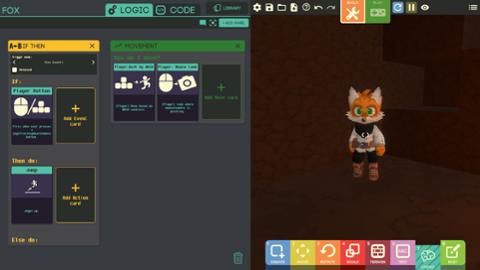In the beginning (that is, early 2016), Amazon Lumberyard offered a lot of promise to game developers at all skill levels: By combining a lot of cross-platform game-development tooling with the storage and computation of AWS cloud, it seemed like an unbeatable proposition for game developers who didn’t want to stick with Unity or Unreal, the leading players in the game-development space.
On top of everything else, Lumberyard was free, and offered a high degree of interoperability with Twitch, the popular website where audiences can watch people play through games.
But a funny thing happened on Lumberyard’s pathway to dominance: It didn’t make that much of a market-share dent against Unreal or Unity, which have continued to build out their respective feature-sets (while behaving aggressively on the pricing front). In addition, Amazon Game Studios, Amazon’s game-development arm, has suffered from layoffs and a muddled production schedule.
“Amazon Game Studios is reorganizing some of our teams to allow us to prioritize development of New World, Crucible, and new unannounced projects we’re excited to reveal in the future,” read an Amazon announcement in June, soon after rumors of layoffs emerged. The company then tried to frame the reorganization as “the result of regular business planning cycles where we align resources to match evolving, long-range priorities.”
Undeterred by these issues, Amazon recently updated Lumberyard with even more features, including refactored (re: improved) cross-platform architecture, which seems like a hard stab at better adoption numbers. “We removed heavy reliance on cascading platform #ifdefs by reorganizing platform-specific code into a parallel directory hierarchy,” read the release notes. “This makes cross-platform feature development and maintenance easier and also significantly reduces the effort required to add new platforms to Lumberyard. (Note that public APIs were not changed as part of this refactor.)”
Other improvements include tweaks to Script Canvas visual scripting, the Emotion FX Animation Editor (“dynamically simulate physically-based secondary animation for your actors,” such as long hair or a backpack shifting whenever a character moves), and support for NVIDIA’s PhysX 4.1.
Those improvements might speak to those who use Lumberyard, but whether they can sway game developers already committed to Unreal and Unity is an open question, especially given the low barriers to entry for both of those platforms. Despite the marketing muscle of Amazon and integration with AWS, Lumberyard has failed to become a major disruptor of the current game-development paradigm. What would it actually take to get game developers to give it a try?



